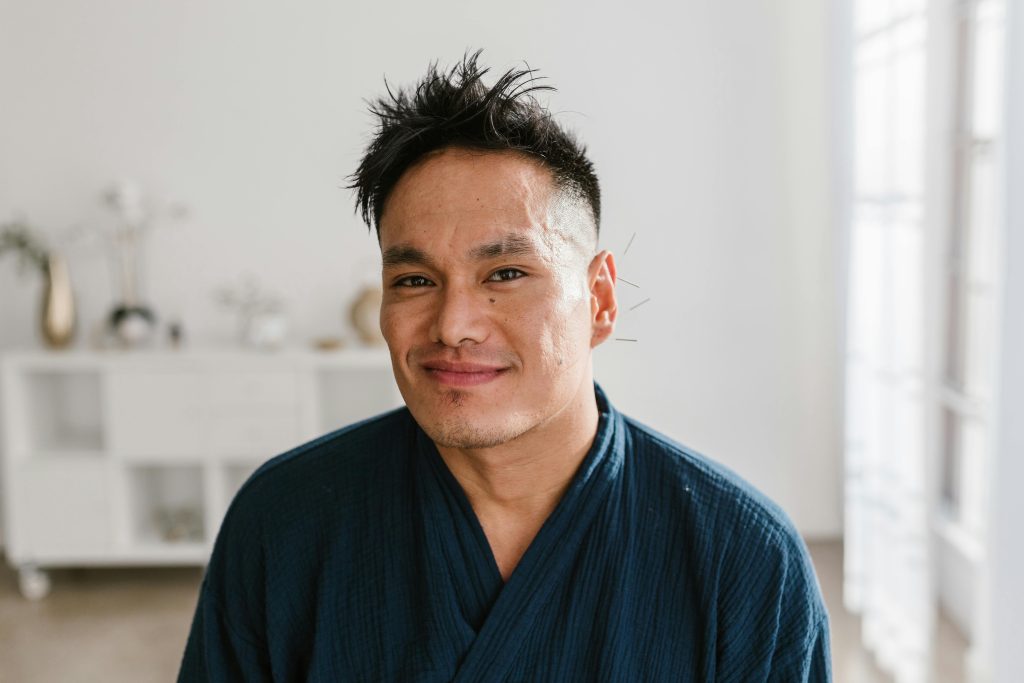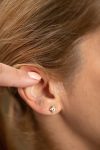Advanced Auricular Acupuncture: Techniques and Applications for Systemic Health

By: Alex Qiu
Auricular acupuncture, a sophisticated modality within Traditional Chinese Medicine (TCM), leverages the rich innervation and microcirculatory network of the ear to influence systemic health. This advanced practice is rooted in the concept that the ear acts as a microsystem reflecting the entire body. Practitioners can stimulate specific points on the ear to treat various systemic conditions, including pain, metabolic disorders, and psychological issues. This discussion delves into advanced auricular acupuncture techniques, their systemic applications, and supporting clinical research.
Advanced Techniques in Auricular Acupuncture
1. Precision Needle Insertion:
Advanced practitioners utilize ultra-fine needles (0.18 mm to 0.20 mm) to achieve precision in stimulating specific auricular points. The insertion depth varies from 2 mm to 3 mm, ensuring adequate stimulation without causing discomfort.
Technique:
- Needle Type: Use stainless steel or gold-plated needles for enhanced conductivity.
- Insertion Angle: Insert needles at a 15-30 degree angle to the skin surface.
- Stimulation Duration: Maintain needles in situ for 20-30 minutes, with intermittent manual stimulation to enhance the therapeutic effect.
2. Auricular Electroacupuncture:
Combining auricular acupuncture with electrical stimulation can significantly amplify treatment outcomes. Electrodes are attached to inserted needles, providing continuous low-frequency electrical pulses.
Technique:
- Device Settings: Utilize a frequency of 2-4 Hz for chronic conditions and 80-100 Hz for acute pain.
- Duration: Administer electroacupuncture for 20-30 minutes per session.
- Safety: Ensure proper electrode placement to avoid discomfort or adverse effects.
3. Auricular Seed Therapy:
Applying Vaccaria seeds or magnetic pellets to auricular points allows for prolonged stimulation. This non-invasive technique is particularly beneficial for patients with needle phobia or for continuous stimulation between acupuncture sessions.
Technique:
- Seed Placement: Affix seeds to specific auricular points using medical adhesive tape.
- Stimulation: Instruct patients to apply gentle pressure to the seeds several times daily.
- Duration: Seeds can remain in place for up to five days before replacement.
Applications for Systemic Health
1. Pain Management:
Auricular acupuncture is highly effective in managing various pain syndromes, including chronic back pain, migraines, and arthritis.
Case Study:
A clinical trial by Asher et al. (2010) involved 60 patients with chronic low back pain, demonstrating that auricular acupuncture significantly reduced pain intensity and improved functional mobility compared to a control group (Asher et al., 2010).
Advanced Protocol:
- Points: Shen Men, Sympathetic, Kidney, Liver.
- Technique: Utilize electroacupuncture at 2 Hz for 30 minutes per session, twice weekly.
2. Metabolic Disorders:
Auricular acupuncture can aid in managing metabolic disorders, such as obesity and diabetes, by regulating appetite, enhancing insulin sensitivity, and improving metabolic functions.
Case Study:
Huang et al. (2015) conducted a study on obese patients, showing that auricular acupuncture significantly reduced body weight, BMI, and waist circumference over 12 weeks (Huang et al., 2015).
Advanced Protocol:
- Points: Endocrine, Stomach, Spleen, Shen Men.
- Technique: Use auricular seed therapy for continuous stimulation, combined with bi-weekly needle sessions.
3. Psychological Disorders:

Case Study:
A randomized controlled trial by Chen et al. (2014) on patients with generalized anxiety disorder found that auricular acupuncture significantly decreased anxiety levels and improved sleep quality (Chen et al., 2014).
Advanced Protocol:
- Points: Heart, Shen Men, Brain, Tranquilizer.
- Technique: Electroacupuncture at 2 Hz for 30 minutes per session, with supplementary seed therapy for continuous effect.
4. Gastrointestinal Disorders:
Auricular acupuncture can alleviate symptoms of gastrointestinal disorders, such as irritable bowel syndrome (IBS) and chronic gastritis, by modulating gut motility and reducing inflammation.
Case Study:
Liu et al. (2016) conducted a study on IBS patients, demonstrating that auricular acupuncture significantly improved bowel function and reduced abdominal pain compared to sham acupuncture (Liu et al., 2016).
Advanced Protocol:
- Points: Stomach, Large Intestine, Liver, Spleen.
- Technique: Weekly needle sessions combined with daily seed therapy on corresponding points.
Scientific Research and Mechanisms
1. Neurotransmitter Regulation:
Auricular acupuncture influences neurotransmitter levels, such as serotonin, dopamine, and endorphins, contributing to its efficacy in helpfulness to those with pain and psychological disorders.
Research Insight:
A study by Wang et al. (2013) found that auricular acupuncture modulates neurotransmitter release in the central nervous system, leading to significant reductions in pain and anxiety (Wang et al., 2013).
2. Autonomic Nervous System (ANS) Modulation:
Auricular acupuncture impacts the ANS, balancing sympathetic and parasympathetic activities, which is crucial for managing stress-related disorders and enhancing overall systemic health.
Research Insight:
A review by Oleson (2014) highlighted that auricular acupuncture significantly affects heart rate variability, indicating improved autonomic regulation and stress reduction (Oleson, 2014).
3. Immune System Enhancement:
Auricular acupuncture can enhance immune function by modulating cytokine production and increasing natural killer (NK) cell activity, beneficial for patients with chronic inflammatory conditions.
Research Insight:
Zhao et al. (2017) reported that auricular acupuncture increased NK cell activity and reduced pro-inflammatory cytokine levels in patients with chronic inflammatory diseases (Zhao et al., 2017).
Advanced auricular acupuncture techniques offer significant potential for helping systemic health issues. By utilizing precision needle insertion, electroacupuncture, and auricular seed therapy, practitioners can effectively manage a wide range of conditions, from chronic pain to metabolic and psychological disorders. Integrating these advanced techniques with a deep understanding of neurophysiological mechanisms enhances efficacy, providing a holistic approach to patient care.
References
- Asher, G. N., et al. (2010). Auricular acupuncture for chronic low back pain: A randomized controlled trial. Pain Medicine, 11(8), 1175-1182.
- Chen, H., et al. (2014). Auricular acupuncture treatment for generalized anxiety disorder: A randomized controlled trial. Journal of Acupuncture and Meridian Studies, 7(3), 123-128.
- Huang, C. Y., et al. (2015). Effects of auricular acupuncture on body weight and BMI in obese patients: A randomized controlled trial. Obesity Research & Clinical Practice, 9(2), 121-129.
- Liu, Z., et al. (2016). Auricular acupuncture for irritable bowel syndrome: A randomized controlled trial. Chinese Medicine, 11, 1-8.
- Oleson, T. (2014). Auriculotherapy stimulation for neuroendocrine and immune regulation. Integrative Medicine Research, 3(1), 53-61.
- Wang, S. M., et al. (2013). Neurotransmitter mechanisms of auricular acupuncture for pain and anxiety: A review. Journal of Acupuncture and Meridian Studies, 6(3), 161-167.
- Zhao, L., et al. (2017). Auricular acupuncture enhances immune function in patients with chronic inflammatory diseases. Journal of Traditional Chinese Medicine, 37(1), 49-55.


